 Shakara – The Complete Collection
Shakara – The Complete Collection
Writer: Robbie Morrison
Artist: Henry Flint
Letterers: Ellie deVille and Annie Parkhouse
Publisher: 2000 AD / Rebellion
Publication Date: March 2025
There’s something immensely satisfying about the basic, relatively simple cadence of Shakara.
The strip — first published in 2000 AD starting back in 2002 — typically follows this pattern: readers are made aware of some grave space calamity or injustice. Those responsible for said space calamity become alarmed by the approach of something. That something is a lanky, spiked S&M-looking cosmic menace with one of the coolest sci-fi designs you’ve ever seen. And then that something wastes everything, with violent efficiency, punctuating it all by yelling Shakara!
And life/comics is good.
This is all a simplification, of course, of the Shakara comics created by writer Robbie Morrison, artist Henry Flint, and letterers Ellie deVille and Annie Parkhouse. First serialized in the pages of The Prog, these comics have now been collected all together for the first time in a new book aptly-titled Shakara: The Complete Collection.
And like the basic, satisfying cadence of the concept, the book is also good. But it would run the risk of getting dull if the storytellers did not use the cadence described above as a jumping off point for more complicated and surprising storytelling, and that’s what struck me most when reading these comics all together as a whole. What emerges as one progresses through this collection is a thoughtful treatise on the unsatisfying nature of violence and revenge, on the repetitious cycle that plays out over and over and over again when leaders choose oppression and death as the solutions to problems.
That point, however, doesn’t really start to emerge in full until about halfway through the book. By then, we’ve seen our main character go up against an interesting and varied cast of foes. There’s a famous assassin named Death who can’t resist one last big job before retirement, there’s the daughter of one of Shakara’s murdered foes who just wants to know why he did it, there’s a a race of pretentious cyborg dinosaur killers, there’s a conqueror so accomplished he’s grown bored, and so on and so on.
As I read through all of this, I was impressed with the elasticity of what at first struck me as a simple concept, albeit one played out with complex trappings and good humor. The famous assassin storyline is a good lesson in the value of comic relief for a story steeped in ultra violence. It doesn’t make light of the killing or death (that would be tacky), but instead plays on heist tropes to give us an arc with some levity before we get back to the killing and death in earnest. In that arc, we get parody characters, my favorite of which was the Indiana Jones analog, the hilariously-named Indio Cojones. That’s all good fun, and a great diversion.
There’s really a sense of raucous joy throughout the book when it gets a chance to sit in its quieter moments, and that’s there right from the start, when the opening sequence teases a story about the last surviving human being after Earth’s destruction — before just having some big ugly space guy smash his head and move on. There’s subtle humor to the writing, with lines popping up unexpectedly like “either buy your way out of trouble or prepare to be executed!”, which made me chuckle to myself.
The artwork is also just outstanding. Flint has established himself as one of the most interesting artists within the pages of The Prog, illustrating last year’s much-loved Judge Dredd headlining story arc, A Better World. But by comparison, his work in Dredd’s futurist home of Mega City One feels restrained. Shakara occupies a deep space world where Flint gets to go absolutely nuts with his design work, delivering just design after excellent design, that look as good floating through space in big set pieces as they do being dismembered by Shakara (over a long enough timeline, basically everyone in this book gets dismembered by Shakara).
The lettering is also quite strong, and I particularly enjoyed the white on black work that the protagonist (and the big bad) use to speak. If I have one note about this collection it’s that it takes a an arc or two to find its footing, before settling into the real story here. The concept is there from the start, but it feels a bit like the creators needed to play with it some on the page before discovering Shakara’s real voice and sense of purpose. It’s not a major note though, because those early arcs are still great fun and they manage to setup all that comes later.
There’s just a perfectly-laid trail of narrative bread crumbs that takes us as readers through all 300-plus pages of this story, thrilling us with very-metal deep space brutality as we slowly learn more about the nature of who Shakara is and why he’s doing what he’s doing.
Overall, I had a great time with these comics. I was struck by the high level of craft execution as well as how thoroughly the second half of the book reeled me in, leaving me to speed through it almost compulsively to see how it all ended. Whether you’re new to Shakara or you read these strips weekly as they were published, I highly recommend this new complete collection.
Shakara – The Complete Collection is available now via 2000 AD
Read more great reviews from The Beat!
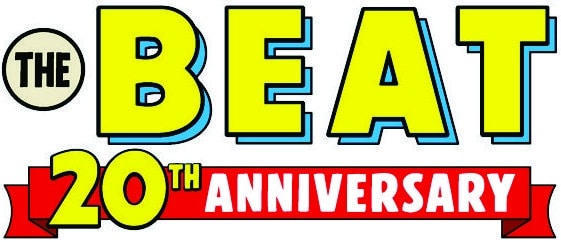

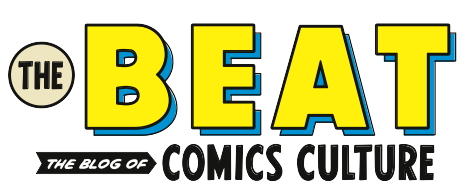
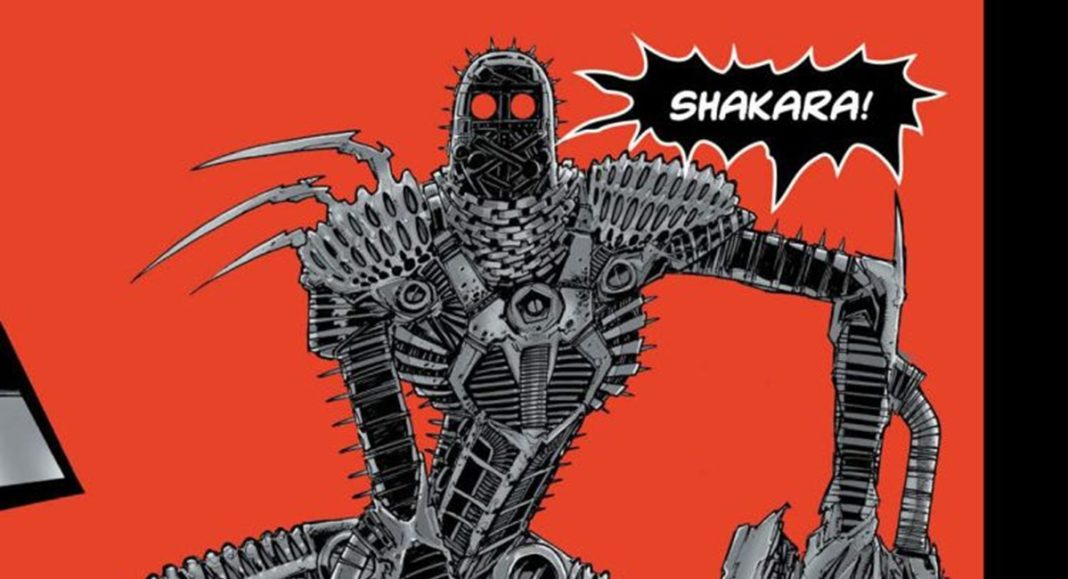
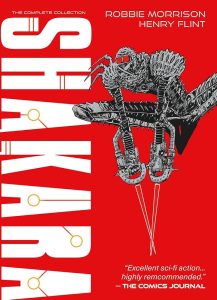
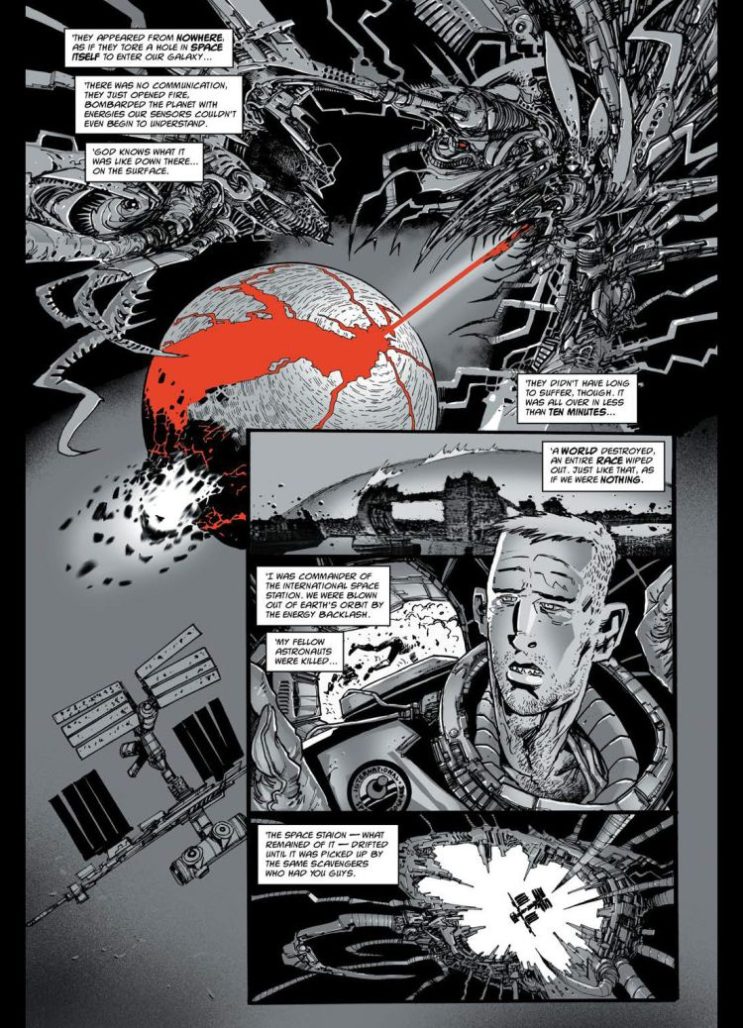
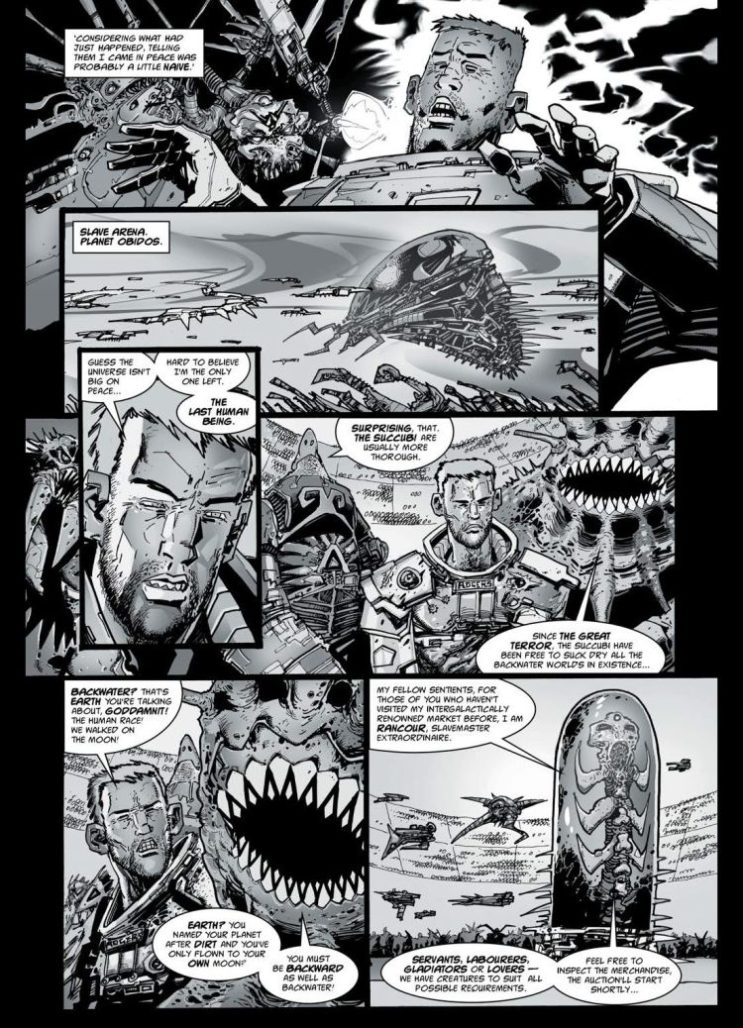
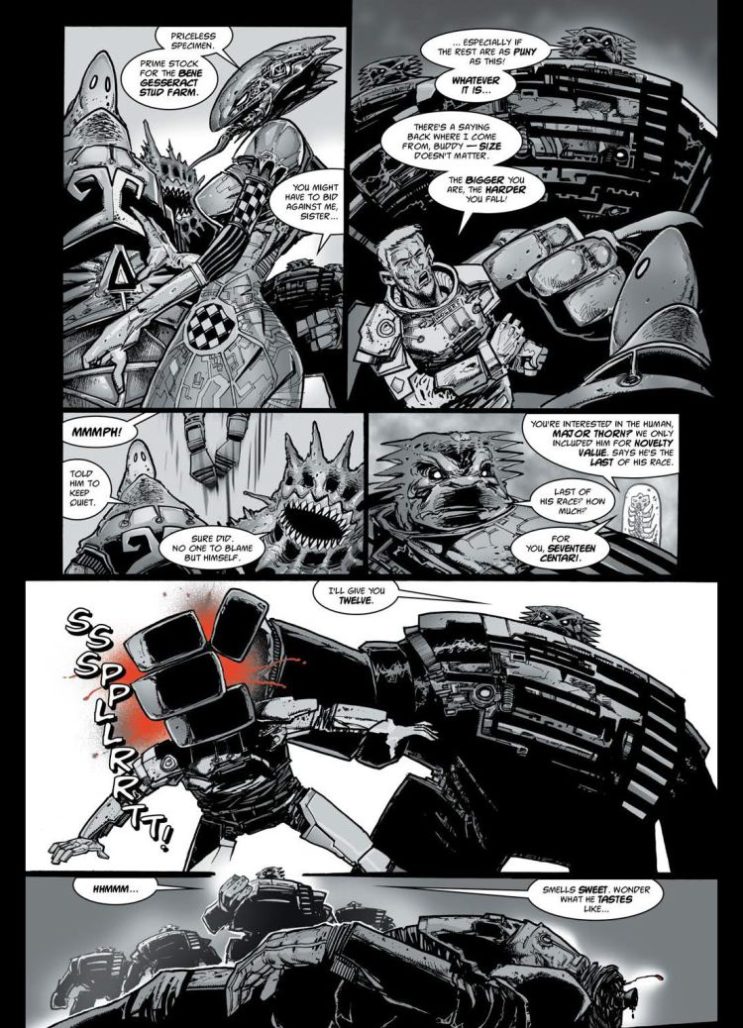
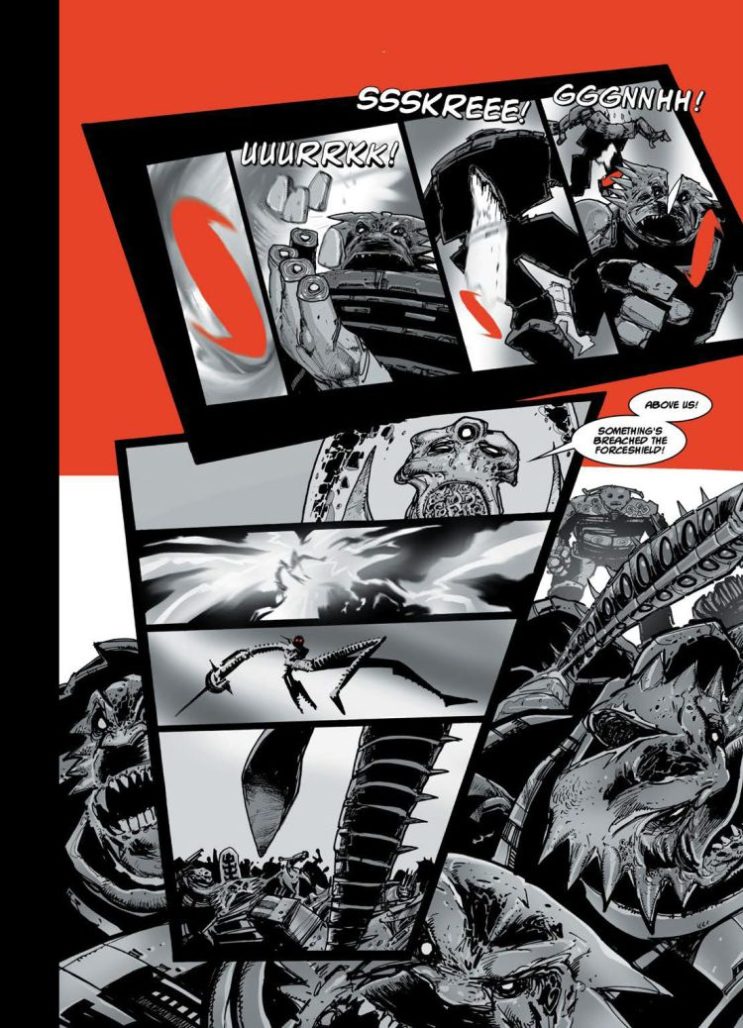
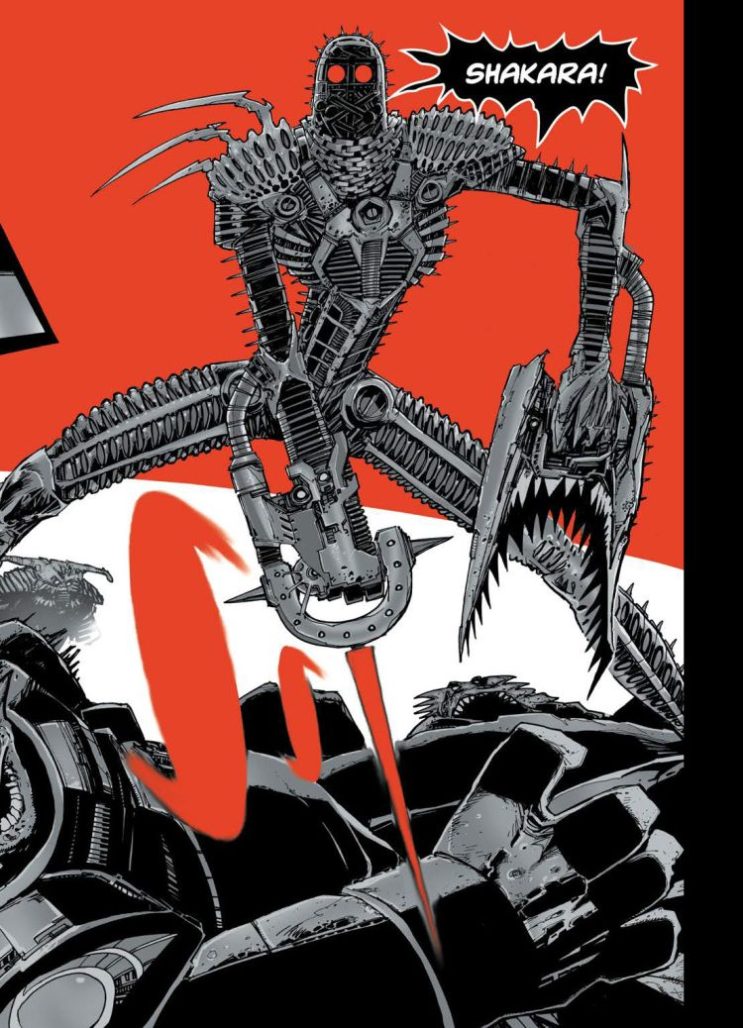
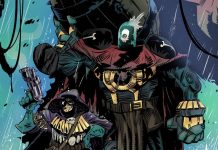







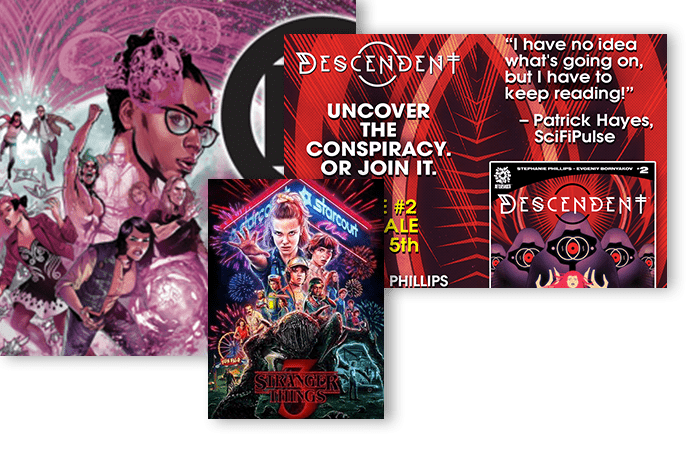
Shakara is a great book and is available in the US at the very end of April. Don’t skip it!
Comments are closed.